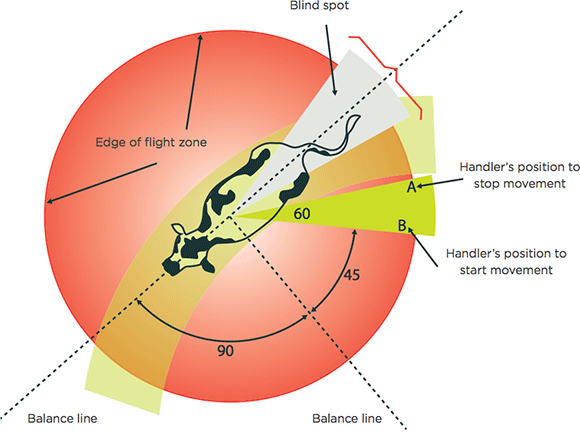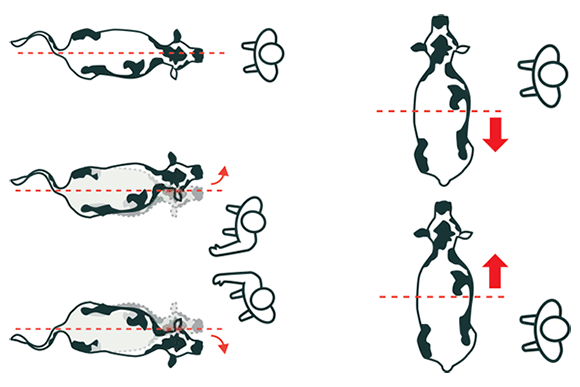What is it?
Principles of cattle movement is one of the key areas to be considered in low stress animal handling. Cattle move smoothly and more willingly for handlers with calm and quiet handling techniques and an understanding of cattle behavior related to herd instinct, flight zone and points of balance, and reactions to wind, noise, sudden movements, and shadows [1]-[3].
Cattle are herd animals and will always tend to try to rejoin their herd mates. This is especially true for a cow and calf, and it can be dangerous to get in between a cow and her calf.
The flight zone, or how close a handler can get to cattle before they move, is small for cattle that are handled frequently, whereas cattle that are handled infrequently will move when handlers are further away. Stepping into the flight zone causes cattle movement; leaving the flight zone stops movement.

When a handler moves across either of the balance lines of a cow (located across the shoulders and along the backbone), the cow will move in the opposite direction. This is called counter movement. For example, moving forward alongside a cow will prompt the cow to move backward, and vice versa.

Further Reading
Product/Service Gaps
References
[1] J. Bidwell, ‘Low Stress Cattle Handling’, 2011. [Online]. Available: https://www.casa-acsa.ca/en/safetyshop-library/low-stress-cattle-handling/
[2] J. Stookey and J. Watts, ‘Low-stress Restraint, Handling and Weaning of Cattle’, in Livestock Handling and Transport, Wallingford, UNITED KINGDOM: CABI, 2007. Accessed: Aug. 18, 2022. [Online]. Available: http://ebookcentral.proquest.com/lib/ucalgary-ebooks/detail.action?docID=298971
[3] National Farm Animal Care Council and Canadian Cattlemen’s Association, Code of practice for the care and handling of beef cattle. Calgary: Canadian Cattlemen’s Association, 2013. [Online]. Available: https://www.nfacc.ca/pdfs/codes/beef_code_of_practice.pdf

